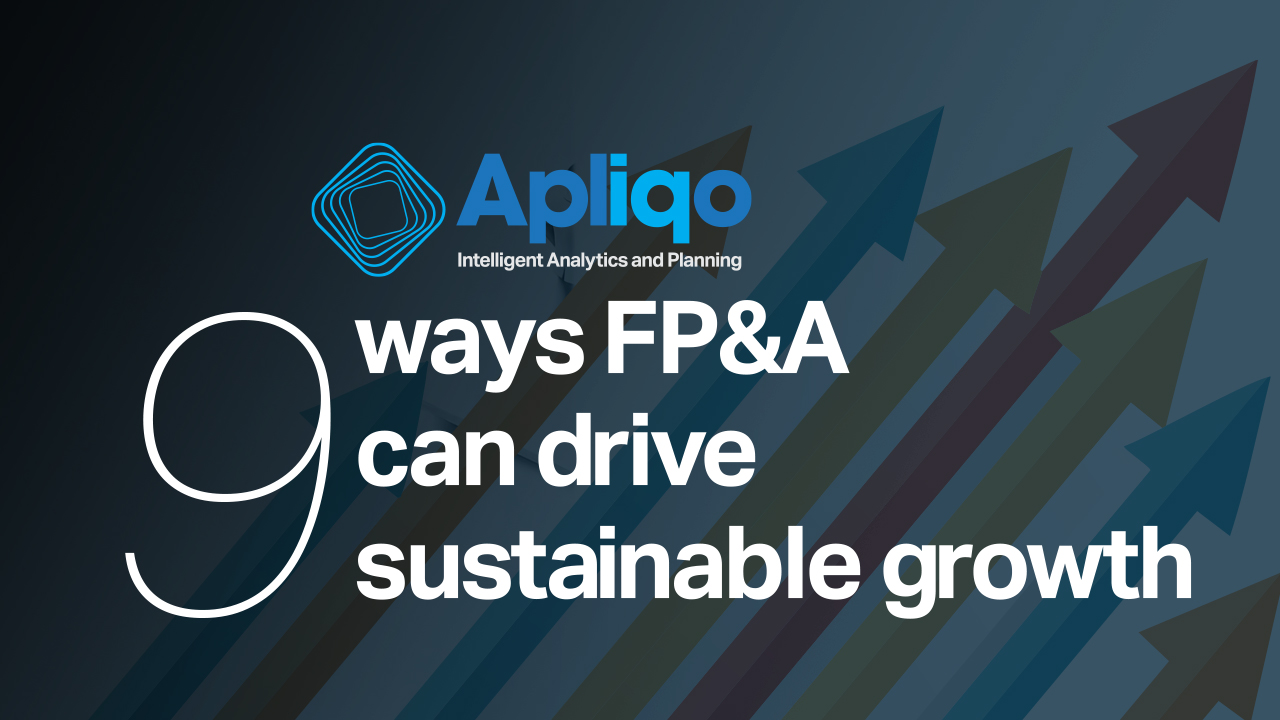Collaboration between finance and operations teams is crucial for an organisation’s success, but too often they simply don’t speak the same language. Finance teams tend to focus on financial accuracy, budgeting, and forecasting, while operations teams are driven by efficiency, productivity, and execution.
Despite their different priorities, these teams must work together to ensure the business achieves its strategic goals.
When used effectively, FP&A software can act as the bridge between these two functions by providing the tools necessary to foster better communication, improve data accessibility, and enable joint planning efforts. In this article, we’ll explore how FP&A software can enhance collaboration and create a more aligned organisation.
Breaking down silos with integrated data
A major barrier to collaboration is the existence of data silos. Finance and operations often work from different sets of data, leading to discrepancies, inefficiencies, and misaligned objectives. Modern FP&A tools, such as those that Apliqo provides, centralise financial and operational data, ensuring both teams work with the same information.
This ensures that there are both:
- Real-time updates: Automated data integration that eliminates lag, enabling instant insights that reflect the latest operational realities; and
- Consistent reporting structures: Standardised data structures that remove ambiguity and ensure alignment across departments.
With a single source of truth, finance and operations can trust the data they rely on, fostering transparency and enhancing decision-making.
Enabling cross-functional planning
Traditional planning processes often see finance and operations working in parallel rather than in tandem. FP&A software introduces collaborative planning capabilities that can align both teams under shared goals. Scenario planning allows businesses to evaluate different operational and financial scenarios together to assess potential impacts and trade-offs. Additionally, driver-based modelling links operational drivers, such as production volumes or customer demand, directly to financial outcomes.
This interconnected approach ensures that financial plans are rooted in operational realities, leading to more achievable business targets. Rolling forecasts further support this dynamic by allowing ongoing adjustments to plans based on evolving business conditions, ensuring agility in a changing market.
Fostering communication through dashboards and alerts
Effective collaboration requires more than shared data; it requires clear, actionable communication. FP&A software can provide customised dashboards that offer each department tailored views of relevant KPIs, ensuring they get the insights they need without being overwhelmed by unnecessary details.
Some communication-enhancing features include:
- Automated alerts: Set thresholds for key metrics, ensuring that operations teams are notified when financial performance deviates from expectations.
- Commentary features: Many platforms allow users to add context directly within reports, facilitating discussions and providing clarity.
These tools can help to enable proactive issue resolution and alignment across departments – while also ensuring that communication lines remain open and structured at all times.
Improving accountability with workflow automation
Accountability can be a challenge when finance and operations are not aligned on timelines and responsibilities. FP&A software includes workflow automation features that assign tasks, track progress, and ensure deadlines are met across different teams. Structured approval workflows help streamline budget approvals and operational plans, while audit trails track changes, ensuring transparency and accountability.
Additionally, task management tools reduce friction by providing clear ownership of key planning activities, making it easier to identify bottlenecks and keep projects on track.
Bridging cultural differences with a common platform
Beyond technical challenges, collaboration between finance and operations can often break down due to cultural differences in language, priorities, and objectives. FP&A software helps bridge this gap by providing visual analytics that translates financial concepts into operational terms. Customisable reporting features ensure that both teams can work with terminology they understand, while shared workspaces allow for collaborative budgeting and strategy development.
By fostering a common understanding and helping both teams align their efforts towards unified business goals, organisations can create a more cohesive working environment.
Embracing continuous improvement
Even with the best technology on board, effective collaboration over the long term requires continuous improvement and a culture of open-minded conversation and adaptability. Encouraging feedback loops that drive meaningful dialogue between teams is key to sustained improvement.
This is something that needs to be built into the cultural fabric of the organisation and it needs to be embraced from both a top-down and a bottom-up perspective.
However, if this attitude is carried throughout, then FP&A software can serve as a powerful enabler of collaboration between finance and operations teams – allowing businesses to achieve greater efficiency, accuracy, and strategic alignment.
Apliqo’s FP&A solutions provide the customisation and flexibility needed to bridge the gap between finance and operations, and we’ve seen many of our clients unlock tremendous growth potential simply by making this collaboration seamless. To discover what that might look like for your organisation, get in touch today, and let us show you how you can make the most of these ideas.







